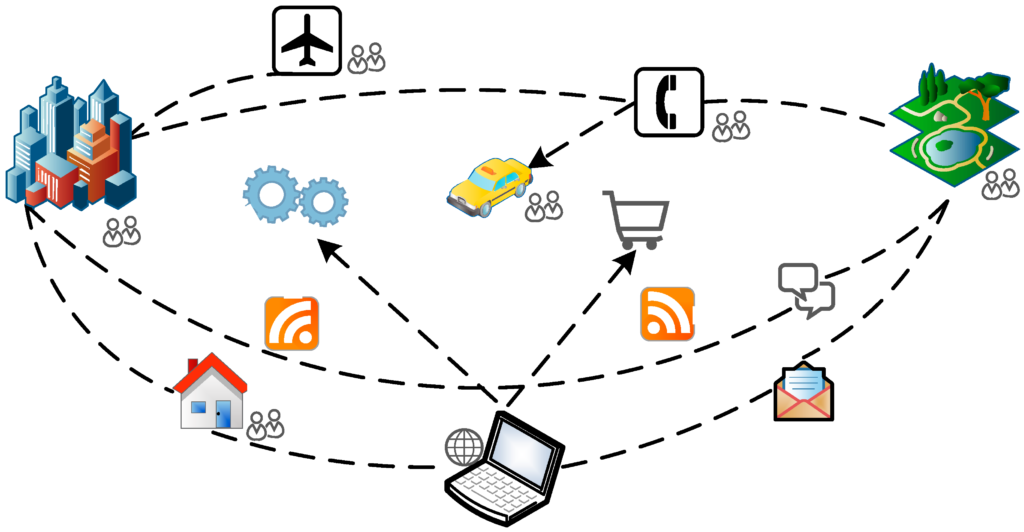Introduction
The world of tourism is evolving rapidly, and the Internet of Things (IoT) is playing a pivotal role in shaping its future. IoT technology offers unprecedented opportunities to enhance the overall travel experience, making it more seamless, personalized, and efficient. By connecting devices and collecting real-time data, IoT enables travelers to have more immersive experiences, empowers tourism businesses to streamline operations, and contributes to sustainable tourism practices. In this blog post, we will delve into the exciting applications of IoT in the tourism industry, exploring its benefits, key examples, and the potential challenges it may face.
Benefits of IoT in Tourism
The integration of IoT in tourism brings forth numerous benefits for both travelers and industry stakeholders. Firstly, IoT enables smart destination management by providing real-time insights into crowd flow, visitor behavior, and resource utilization. This data allows authorities to optimize tourist attractions, improve safety measures, and alleviate congestion.
Moreover, IoT devices can enhance personalization by offering customized recommendations and tailored experiences based on individual preferences. From smart hotel rooms that adjust to guest preferences to wearable devices that provide interactive city guides, IoT technology allows travelers to create unique and personalized itineraries.
Additionally, IoT plays a crucial role in ensuring safety and security. Connected devices can monitor environmental conditions, detect potential hazards, and provide real-time alerts to both tourists and authorities. This contributes to a safer and more secure travel environment.
Key Applications of IoT in Tourism
IoT applications in the tourism industry are diverse and far-reaching, revolutionizing various aspects of travel. One significant area is smart hospitality, where IoT-enabled hotel rooms offer an elevated guest experience. From keyless entry systems and smart thermostats to personalized in-room services and voice-controlled assistants, IoT devices create a seamless and convenient environment for travelers.
Another important application lies in smart transportation systems. IoT sensors embedded in vehicles and infrastructure enable real-time monitoring of traffic flow, optimize route planning, and provide travelers with up-to-date information on delays or alternative transportation options. This ensures efficient and hassle-free transportation experiences.
Furthermore, IoT contributes to sustainable tourism practices by enabling energy and resource optimization. Connected systems can regulate energy usage in hotels, monitor water consumption, and implement waste management strategies, reducing the industry’s environmental footprint.
IoT-based tourist attractions are also gaining popularity. For instance, augmented reality (AR) and IoT technologies can enhance the museum experience by providing interactive and informative exhibits. Visitors can use their smartphones or wearable devices to access additional content, translations, or historical context, creating an engaging and immersive journey.
Challenges and Future Outlook
While IoT holds immense potential in the tourism industry, it faces certain challenges that need to be addressed. Data security and privacy remain critical concerns, as the collection and utilization of personal data increase. Ensuring robust security measures and compliance with privacy regulations is crucial to maintaining trust and protecting user information.
Additionally, interoperability and standardization of IoT devices and platforms pose challenges. To fully harness the benefits of IoT in tourism, different devices and systems need to seamlessly communicate and integrate with each other. Collaborative efforts between stakeholders and industry-wide standards are necessary for the widespread adoption of IoT solutions.
Looking ahead, the future of IoT in tourism appears promising. Advancements in IoT technology, coupled with artificial intelligence and data analytics, will further enhance personalization and deliver more immersive experiences. Integration with wearable devices, virtual reality (VR), and voice assistants will transform the way travelers interact with their surroundings. Furthermore, IoT can contribute to sustainable tourism practices by facilitating eco-friendly initiatives and reducing the industry’s carbon footprint.
Conclusion
The integration of IoT in the tourism industry has the potential to revolutionize travel experiences, making them more personalized, seamless, and sustainable. From smart hospitality to intelligent transportation systems, IoT applications are reshaping the way we explore the world, promising a future of enhanced tourism experiences.

